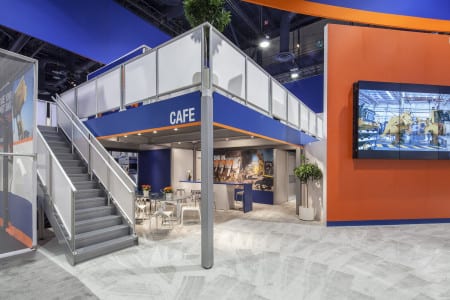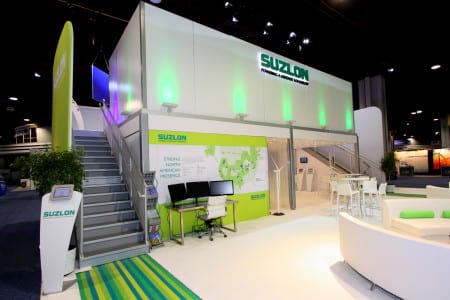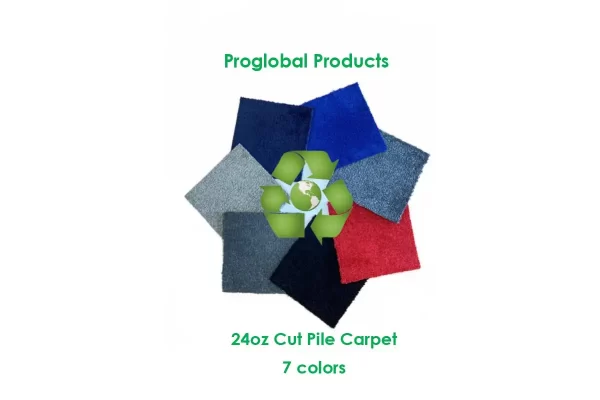Highmark TechSystems in Ft. Wayne, Ind., often delivers more than what meets the eye
The company engineers and designs lightweight modular aluminum systems – including ExpoDecks, ExpoWalls and other products – at its headquarters.
Most modular systems have their roots in European countries. Not Highmark, which proudly proclaims that it has always manufactured in the U.S. The modular double-deck structure has a load rating of 125 pounds per square foot, and can be used with various wall systems and accessories. Highmark holds patents on much of its technology, so it can’t be replicated. The company’s culture of innovation stems from viewing projects from its customers’ perspective and testing potential new products via additive manufacturing plastic prototypes.
“We are not a German company, but we behave like one,” said Matt Andrews, vice president of sales, Highmark TechSystems.
Highmark is one of the few U.S.-based modular system providers selling exclusively to exhibit houses and event planners – never to end users. Most of its competitors either originated or set-up shop overseas. Therefore, modular systems first gained strength in Asia and Europe. Modular systems dominate the show floor at EuroShop in Germany. Highmark Founder Mick Parrott fostered the trend in the U.S., gaining a loyal following among designers and builders due to its reconfigurable attributes and quick set-up.
Modular systems consist of individual components that are used to create an infinite number of structures and designs. Their limitless possibilities allow them to be reused numerous times either as a rental or purchase option.
“When we got familiar with aluminum, a customer asked if we could invent a deck system for them. It was Philips’ Magnavox at International CES in 1996. Three months prior to the show, we got a purchase order to design the double-deck system. That was the first ExpoDeck, and it started the company’s growth in the double-deck market. It wasn’t a part of U.S. exhibiting; it was a rare thing. [Modular systems] have increased since then,” said Andrews.
Although Highmark offers various products within its three main product categories – ExpoDeck, Expo Walls and Elements – its all-aluminum ExpoDecks are the first choice of many exhibit houses and designers. Plus, Andrews says, at the moment, exhibitors love rentals.
 “We are the unadulterated heavyweight champion of double decks,” he said. “Needing more exhibit space is still a problem at some venues. You have to go up if you want space. If you’re selling on the show floor, you can take the prospect to a private space with walls around it to discuss business.”
“We are the unadulterated heavyweight champion of double decks,” he said. “Needing more exhibit space is still a problem at some venues. You have to go up if you want space. If you’re selling on the show floor, you can take the prospect to a private space with walls around it to discuss business.”
Using a rental modular double-deck to increase space is cheaper, according to Andrews, because it allows all the air and space to be used, or in other words, making use of a good portion of the purchased cubic content. The lightweight components of the structure also save on labor and drayage fees.
“We look at our products as being the most user-friendly on the market. Our company goal is to help our customers save their customers’ money,” added Andrews. “When looking at a modular solution versus a custom-built solution, exhibitors save 10 to 20 percent on first use. Over time, their long-term investment and total cost of ownership of our products versus custom items is the proof they need that this is the way to go. Aluminum systems like ours are lighter weight, with savings that aren’t available in the custom world.”
Aside from its product line, what Highmark does best is partner with designers and exhibit builders throughout the entire phase of a project.
“There is an ease of doing business with us. We make complicated projects as easy as possible,” he said.
This includes giving potential clients a quote the same day or within 24 hours; attending end-user meetings set up by the exhibit house to help everyone understand what a modular exhibit truly is and the savings it can provide; and offering assistance onsite to ensure the client is happy.
 “There are some tradeshows that have height regulations we have to work around. We spend a lot of time getting to know fire marshals and rule makers in show halls. We can get a two-story [structure] in almost any hall in the U.S. unless it’s a show for inline booths,” commented Andrews.
“There are some tradeshows that have height regulations we have to work around. We spend a lot of time getting to know fire marshals and rule makers in show halls. We can get a two-story [structure] in almost any hall in the U.S. unless it’s a show for inline booths,” commented Andrews.
Trusted partners such as Highmark have increasingly become beneficial to exhibit houses and event planners since the Great Recession of 2007-09.
In particular, the downturn changed the way exhibit houses operate. Many companies turned to suppliers like Highmark to supplement the in-house exhibit build process. Center for Exhibition Industry Research (CEIR) noted that 30 to 40 percent of exhibit houses are using vendors.
“[Exhibit houses’] lead times have shrunk, making it hard for them to respond. Their margins got tighter, and dollars were harder to come back. You saw the shrinkage. When things started to come back, exhibit houses weren’t ready to build like in the late ‘90s and early 2000s,” Andrews explained.
Smaller exhibit houses especially noticed the benefits of using a modular supplier. As many of their employees are already taking on more than one role to serve customers better, that didn’t give them a lot of time to become experts in new areas.
“A modular system lets the exhibit house do what it does best. Not all of them are double-deck or system wall experts. By leveraging us, they can focus on the customer and the environment,” said Andrews.
Highmark TechSystems and its clients form a partnership in which each party adds their strengths and brings out the best in each other. Their collaboration ensures that the end-user gets the quality product they paid for.
To learn more about Highmark TechSystems, visit www.highmarktech.com.





























